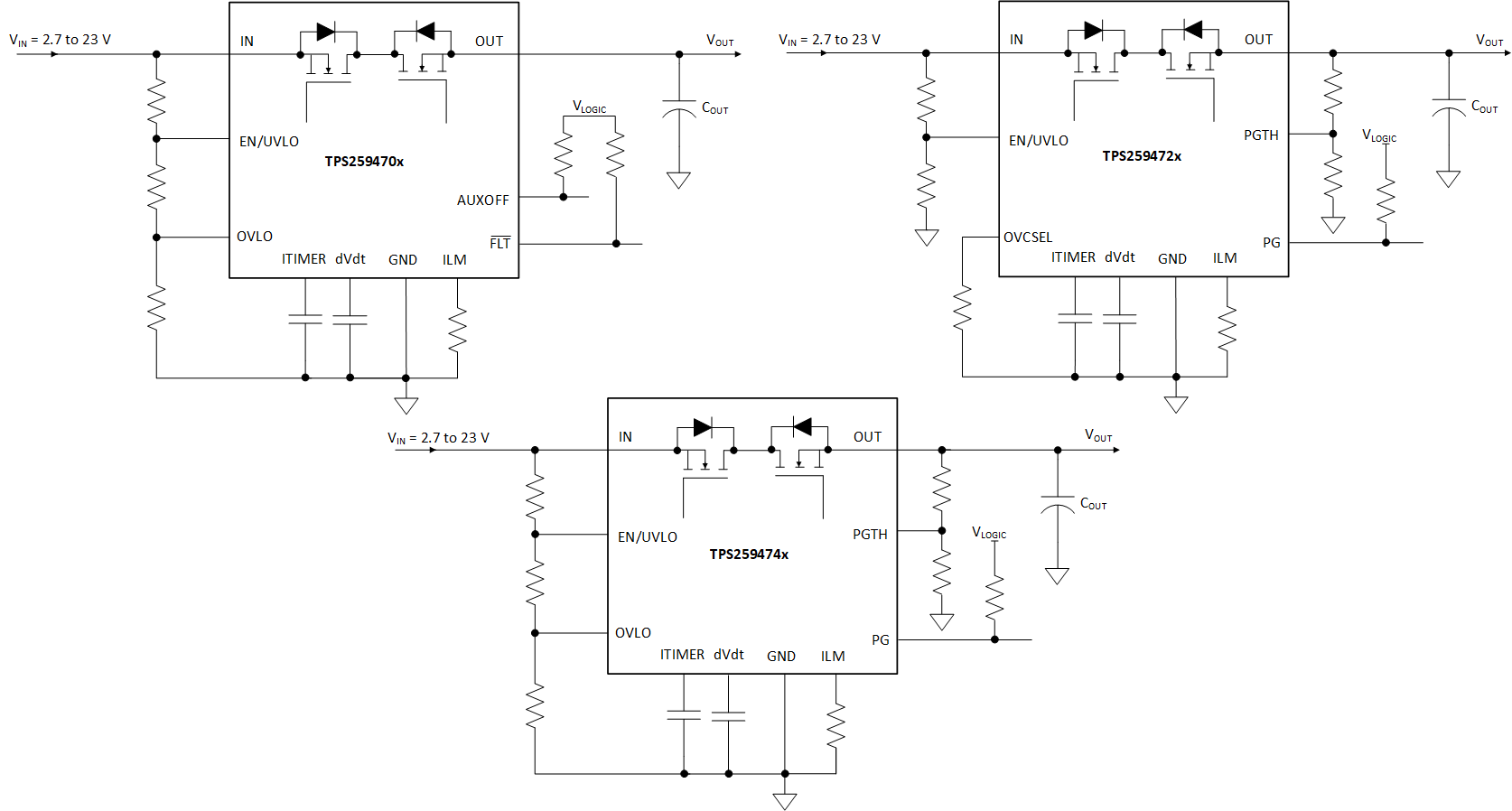ZHCSL91B October 2020 – March 2022 TPS25947
PRODUCTION DATA
- 1 特性
- 2 应用
- 3 说明
- 4 Revision History
- 5 Device Comparison Table
- 6 Pin Configuration and Functions
- 7 Specifications
-
8 Detailed Description
- 8.1 Overview
- 8.2 Functional Block Diagram
- 8.3
Feature Description
- 8.3.1 Input Reverse Polarity Protection
- 8.3.2 Undervoltage Lockout (UVLO and UVP)
- 8.3.3 Overvoltage Lockout (OVLO)
- 8.3.4 Overvoltage Clamp (OVC)
- 8.3.5 Inrush Current, Overcurrent, and Short Circuit Protection
- 8.3.6 Analog Load Current Monitor
- 8.3.7 Reverse Current Protection
- 8.3.8 Overtemperature Protection (OTP)
- 8.3.9 Fault Response and Indication (FLT)
- 8.3.10 Auxiliary Channel Control (AUXOFF)
- 8.3.11 Power Good Indication (PG)
- 8.4 Device Functional Modes
- 9 Application and Implementation
- 10Power Supply Recommendations
- 11Layout
- 12Device and Documentation Support
- 13Mechanical, Packaging, and Orderable Information
9.2 Single Device, Self-Controlled
 Figure 9-1 Single Device, Self-Controlled
Figure 9-1 Single Device, Self-ControlledOther variations:
In a Host MCU controlled system, EN/UVLO or OVLO can also be driven from the host GPIO to control the device.
ILM pin can be connected to the MCU ADC input for current monitoring purpose.
Note:
TI recommends to keep parasitic capacitance on ILM pin below 50 pF to ensure stable operation.
For the TPS259472x/4x variants, either VIN or VOUT can be used to drive the PGTH resistor divider depending on which supply must be monitored for power good indication.